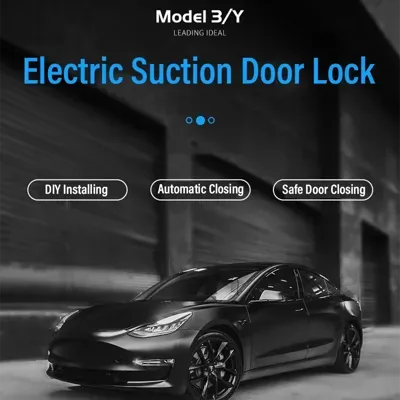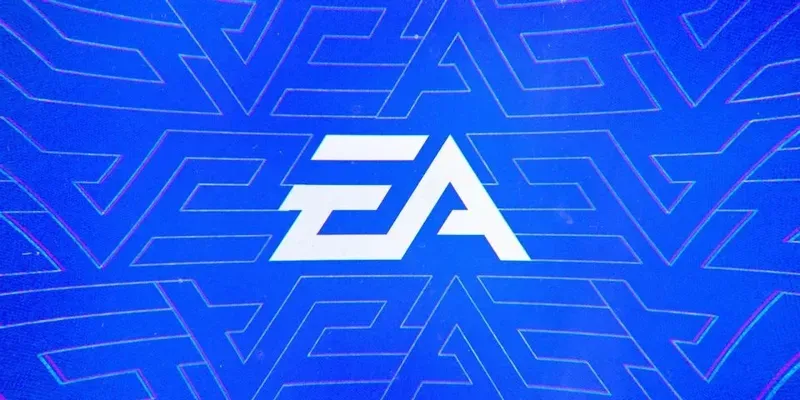Tesla electronic door handles are receiving a major redesign aimed at addressing safety concerns that have arisen from recent investigations. These innovative door handles have been scrutinized by the National Highway Traffic Safety Administration (NHTSA) after reports surfaced about occupants being trapped inside their vehicles due to malfunctioning mechanisms. Tesla’s design chief, Franz von Holzhausen, emphasized the importance of creating door handles that facilitate quick access in panic situations. The upcoming changes will streamline the current design by merging the electronic and manual release systems into a single button, enhancing usability during emergencies. With safety at the forefront, this redesign not only improves Tesla vehicle safety features but also anticipates regulatory adjustments, especially concerning benchmarks for concealed door access.
The upcoming evolution of Tesla’s door access technology involves a comprehensive overhaul of its electronic door handles, which have come under scrutiny for potential safety flaws. As automotive manufacturers seek to innovate vehicle entry systems, the challenge of balancing modern aesthetics with user functionality persists. With a focus on accessibility during emergencies, Tesla aims to introduce a user-friendly door release that combines digital and tactile features. This initiative is particularly relevant in light of recent safety probes by agencies like the NHTSA and changing regulations in international markets. The move towards redesigning these entry mechanisms not only highlights a commitment to improving consumer safety but also represents a significant advancement in automotive design principles.
Redesigning Tesla Electronic Door Handles for Safety
Tesla’s decision to redesign their electronic door handles comes after a thorough investigation into the safety implications of the current design. The NHTSA launched a safety probe based on reports that multiple Tesla owners found themselves trapped inside their vehicles due to nonfunctional handles. This redesign aims to alleviate these issues by ensuring that occupants can easily access the door release mechanism even in panic situations, thus preventing any emergencies from becoming worse.
The new design will integrate an electronic door release with a manual option, allowing occupants to open the doors using a single button. This major overhaul signifies an essential step towards improving Tesla vehicle safety features. In a crisis, having an easily accessible and reliable means to exit can be life-saving, and this redesign addresses that critical need.
The Importance of Intuitive Design in Tesla Vehicles
Tesla emphasizes the importance of intuitive design, particularly in high-stress scenarios. As vehicle manufacturers are increasingly scrutinized for their safety features, Tesla’s approach reflects a larger commitment to ensuring that their users can operate their vehicles seamlessly and without stress. By focusing on creating a mechanism that combines both electronic and manual operations, they are addressing a long-standing criticism regarding the usability of high-tech features under pressure.
The redesigned handles will not only cater to functionality but also improve the user experience as a whole. Customers deserve to know that while embracing advanced technology, they won’t lose the simplicity and reliability found in traditional manual door handles. This blend of technology and usability is what differentiates Tesla in a competitive automotive market.
NHTSA Safety Probe: What It Means for Tesla Owners
The recent NHTSA safety probe into Tesla’s electronic door handles is a significant wake-up call for the automaker. The investigation results will determine whether the current design is permitted to continue or if drastic changes are required to enhance user safety. This scrutiny could lead to more stringent regulations regarding electronic door releases, ultimately shaping how Tesla and other manufacturers present future vehicle safety features.
Tesla owners are understandably concerned about how these investigations might affect their vehicles. Knowing that the company is voluntarily addressing potential safety risks could provide some reassurance. With ongoing support and prompt improvements, such as the design changes announced for the electronic door handles, Tesla may bolster consumer confidence and demonstrate its commitment to innovation without compromising on safety.
Combining Electronic and Manual Door Handles: A Game-Changer
The integration of electronic door release and manual functions in Tesla’s redesigned door handles stands to revolutionize the way occupants interact with their vehicles. This innovative feature enhances accessibility while maintaining Tesla’s signature sleek design. The ability to quickly and intuitively open a door in emergencies could drastically improve safety outcomes for Tesla users.
This change signifies Tesla’s proactive approach to addressing consumer feedback while adapting to regulatory scrutiny. By acknowledging the need for a dual-function mechanism, the company is setting a new standard not just for their vehicles but also for the automotive industry at large. The evolution of design philosophy to blend high-tech capabilities with practical functionality represents a forward-thinking strategy for maximum user safety.
Responding to Consumer Concerns: Tesla’s Commitment to Safety
Tesla has always valued consumer feedback, and the recent reports surrounding electronic door handle malfunctions highlight the importance of responsiveness to user concerns. By initiating changes in design based directly on owner experiences, Tesla not only strengthens its relationship with its customer base but also illustrates its dedication to safety and innovation.
This responsive approach is vital, especially in an industry that values technological advancement alongside safety. Tesla’s efforts to implement a redesigned door handle system reflects a strong commitment to not merely keeping pace with regulations like those from the NHTSA but also to exceed expectations for vehicle safety features. Such initiatives assure owners that their voices are heard and taken seriously.
Anticipating Changes in Regulations: Tesla’s Strategic Adaptation
As new regulations emerge, particularly those under consideration in countries like China regarding concealed door handles, Tesla remains vigilant. The potential for a ban raises questions about the design choices that prioritize aesthetic appeal over functionality. By proactively redesigning their electronic door handles, Tesla positions itself as a leader in adapting to regulatory changes while prioritizing safety and usability.
This forward-thinking approach allows Tesla to maintain a competitive edge in the global market. With stakeholders demanding both innovation and compliance, it is crucial for Tesla to align its designs with evolving legal landscapes. By embracing change ahead of time, the company not only avoids future complications but also solidifies its reputation as a pioneer in automotive safety features.
Understanding the Technology Behind Tesla’s Electronic Door Handles
The technology integrated into Tesla’s electronic door handles represents a complex balance of engineering and design. These mechanisms must respond quickly and reliably to user commands, ensuring that safety isn’t compromised even with high-tech solutions. Understanding how this technology works can help Tesla owners feel more comfortable with their vehicles’ functionalities.
The current revision aims to simplify the operational process for users while enhancing the responsiveness of both electronic and manual functions. By merging these mechanisms into a single, streamlined control, Tesla is preparing to deliver a cutting-edge automated experience that could redefine customer expectations for modern vehicle door systems.
Sustainability and Innovation: Tesla’s Dual Commitment
Tesla’s dedication to sustainability pairs seamlessly with its commitment to innovative vehicle design. The redesign of electronic door handles encompasses not only user safety but also considerations regarding environmental impact. By developing more efficient door mechanisms, Tesla continues to move towards minimal energy consumption throughout the vehicle’s lifecycle.
This dedication to sustainable practices, coupled with advanced technology, positions Tesla as not just a car manufacturer, but as a forward-thinking entity focused on the future of transportation. Their approach to combining safety with ecological responsibility showcases the potential for integrating innovative technologies with essential vehicle features, satisfying modern consumer demands.
The Future of Vehicle Design: Tesla’s Impact on the Industry
Tesla’s innovations, including the redesign of its electronic door handles, continue to set benchmarks within the automotive industry. As competitors look to enhance their own safety features and technology, the forward-thinking nature of Tesla’s design adjustments will likely inspire others to consider consumer safety and user experience as critical components of vehicle design.
The evolution of door handle technology reflects broader trends toward intelligent vehicle design. Companies are expected to follow suit by reevaluating their own systems, which could lead to improved safety measures industry-wide. Tesla, through these initiatives, has not only ensured the safety of its users but also positioned itself as a pivotal influence in shaping the future of automotive design.
Frequently Asked Questions
What changes are being made to Tesla electronic door handles as part of the redesign?
Tesla is redesigning its electronic door handles to combine the electronic and manual door-release mechanisms into a single intuitive button. This change aims to make it easier for occupants to open the door in a panic situation.
Why is there an NHTSA safety probe regarding Tesla door handles?
The NHTSA has initiated a safety probe into Tesla electronic door handles due to reports from owners who experienced issues with the handles not opening from the outside, potentially trapping occupants inside the vehicle.
How do Tesla vehicle safety features relate to the electronic door handle redesign?
The redesign of Tesla electronic door handles is part of a broader effort to enhance vehicle safety features, ensuring that occupants can quickly and easily exit the vehicle in emergencies.
What issues have prompted Tesla to reassess their electronic door release system?
Issues were reported by Tesla owners who found themselves unable to open the electronic door handles from the outside, especially in scenarios requiring urgent rescue, prompting the company to redesign the system.
Are manual door handles being considered for Tesla vehicles in the upcoming redesign?
Yes, Tesla’s redesign will incorporate manual door handles along with electronic ones, creating a more user-friendly experience, especially in emergency situations.
What is Franz von Holzhausen’s role in the Tesla door handle redesign?
Franz von Holzhausen, Tesla’s design chief, is overseeing the door handle redesign, focusing on improving functionality and safety for vehicle occupants.
How might changes in Chinese regulations affect Tesla’s electronic door handle design?
Tesla is monitoring potential regulations in China that may ban fully concealed door handles, which could influence their redesign strategy globally.
Will the new Tesla electronic door handles be easier to operate during emergencies?
Yes, the redesigned Tesla electronic door handles will feature a combined electronic and manual release mechanism, aimed at providing a more intuitive operation during emergencies.
What has Tesla stated about the current issues with its electronic door handles?
Tesla acknowledges concerns regarding its electronic door handles and is undertaking redesign efforts in light of user feedback and the NHTSA’s safety inquiries.
How does the redesign of Tesla electronic door handles reflect the company’s commitment to safety?
The redesign reflects Tesla’s commitment to safety by ensuring that electronic door handles are more accessible and functional, especially in panic situations, thereby enhancing overall vehicle safety.



























